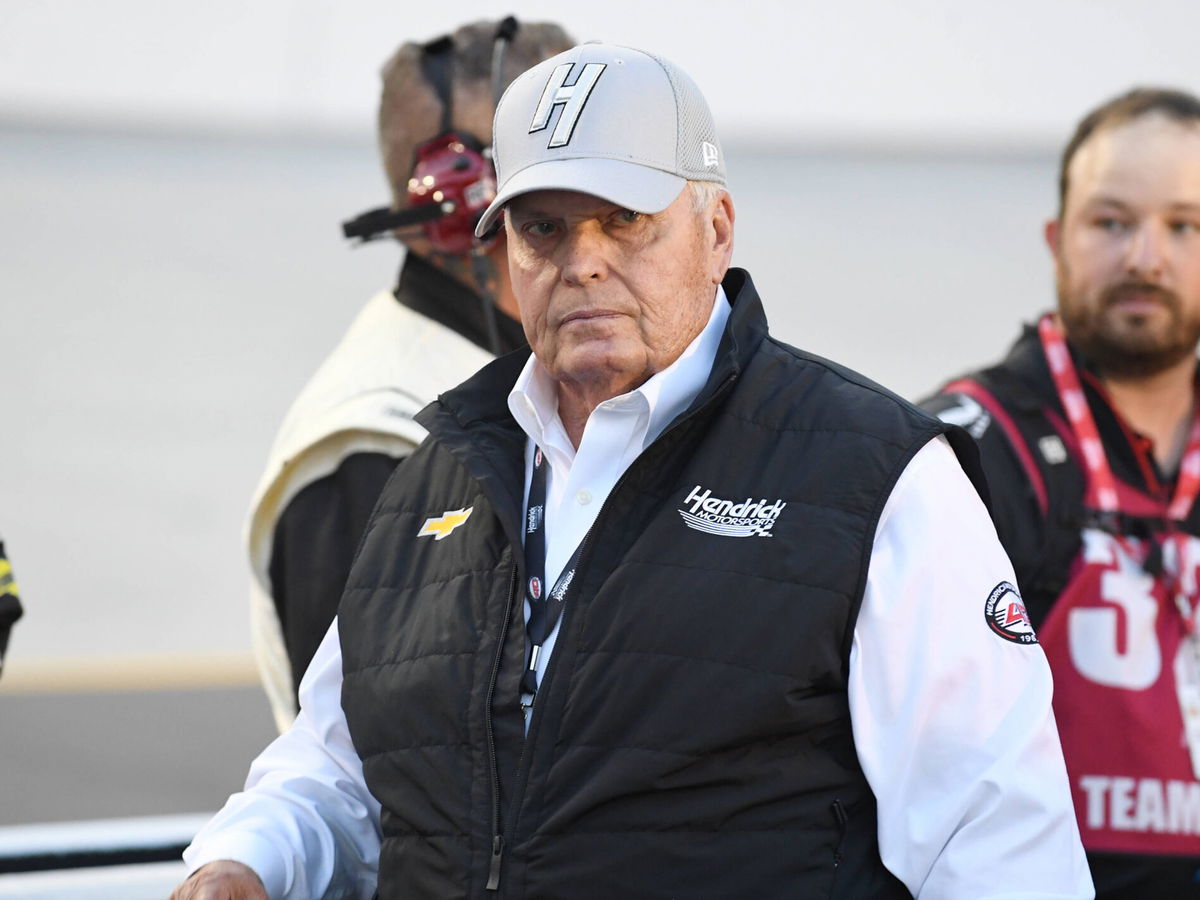
Imago
BRISTOL, TN – SEPTEMBER 21: Rick Hendrick looks on prior to the running of the NASCAR, Motorsport, USA Cup Series Bass Pro Shops Night Race on September 21, 2024, at Bristol Motor Speedway in Bristol, TN. Photo by Jeffrey Vest/Icon Sportswire AUTO: SEP 21 NASCAR Cup Series Bass Pro Shops Night Race EDITORIAL USE ONLY Icon240921905

Imago
BRISTOL, TN – SEPTEMBER 21: Rick Hendrick looks on prior to the running of the NASCAR, Motorsport, USA Cup Series Bass Pro Shops Night Race on September 21, 2024, at Bristol Motor Speedway in Bristol, TN. Photo by Jeffrey Vest/Icon Sportswire AUTO: SEP 21 NASCAR Cup Series Bass Pro Shops Night Race EDITORIAL USE ONLY Icon240921905
Darlington’s savage terrain and abrasive surface are infamous for making it ‘The Track Too Tough to Tame’, but even that iconic challenge hasn’t produced such a sweeping collapse for Hendrick Motorsports in the playoff opener. Whether it’s setup misfires, execution breakdowns, or just plain poor luck, the results speak volumes. Now with the pressure mounting and points hemorrhaging, Hendrick faces an uphill climb to regain footing in a postseason where there is no room for mistakes.
Watch What’s Trending Now!
Hendrick Motorsports faces a harsh playoff reality in its four-car team era
Hendrick Motorsports, typically a fortress in the NASCAR postseason, just suffered its most brutal playoff opening in the four-car era. And at the 2025 Southern 500 at Darlington Raceway, the quartet of drivers delivered a collective humbling. Chase Elliott limped home in 17th, while Kyle Larson followed suit in 19th, William Byron managed 21st, and Alex Bowman trailed them in 31st. This is, without question, the worst flashpoint ever under the unified four-car format for HMS, setting a dismissal tone as the playoffs kick into gear.
ADVERTISEMENT
To put this into context, Hendrick’s season history has nearly always been defined by depth and consistency. In their expansion era beginning in 2002, the organization only failed to land a single top 10 finish in the playoffs on different occasions, specifically in 2011 and 2017, but even then, not all cars under those were flashes of miscues. What transpired this weekend at Darlington is an unprecedented and alarming, bleak, and disruptive reality check for a team that once dominated postseasons with its top-tier performance.
Will Hendrick Motorsports be able to change the playoff narrative on the upcoming playoff tracks?
Following the Southern 500 at Darlington, the round of 16 continues with stops at Gateway and then Bristol Motor Speedway. After that, the round of 12 unfolds at New Hampshire, Kansas, and the Charlotte Roval. The intensity matches up further in the round of eight with races at Las Vegas, Talladega, and Martinsville, before the championship showdown at Phoenix.
ADVERTISEMENT
Historically, Hendrick Motorsports has been a favorite at many of these venues. In Las Vegas, Kyle Larson owns a dazzling average finish of around 9.3 with HMS leading all teams in wins, top tens, and laps led. Talladega has been trickier. Larson averaged about 22.8 while Chase Elliott fared better at 13.7, which is still not ideal, but not disastrous either. As for Gateway, data is gas, with only three recent starts from Larson showing mixed results: fourth, 12th, and 15th.
And there seems to be a path forward. Vegas presents a golden opportunity, especially for Kyle Larson and Byron, who have prior successes there. Meanwhile, improving consistency at superspeedways like Talladega and nailing strategy at Gateway and Bristol could keep all four cars alive. Given HMS’s postseason pedigree and sheer depth, a rebound is not just possible but also expected.
ADVERTISEMENT
Top Stories
‘RIP’: NASCAR World Crumbles in Tears as 39-YO Former JR Motorsports Driver Passes Away
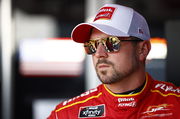
EXCLUSIVE: Kyle Petty: NASCAR’s Renaissance Man
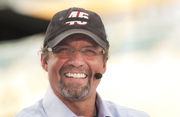
Jeff Gordon Duped Into False Hope as NASCAR’s Blatant Lie Exposes Jim France as Culprit No. 1
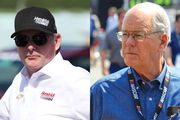
Displeased Judge Bell Explodes on NASCAR Lawyers Caught Red-Handed In Dirty Courtroom Tactics
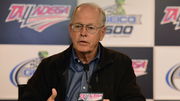
NASCAR Trapped in $61M Financial Nightmare as Steve O’Donnell Admits Stripping Team Power to Force Mexico Agenda
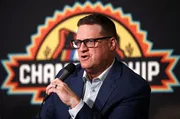
What are the immediate areas of improvement for Hendrick Motorsports?
Alex Bowman’s bid to move into the second round of the NASCAR playoffs suffered a serious setback in stage two of Sunday’s Cook Out Southern 500 at Darlington Raceway. When Bowman pulled the No. 48 Hendrick Motorsports Chevrolet onto pit road, what should have been a routine 10-11 second service turned into a disastrous 40-second stop. A cascade of issues left the car sitting idle for longer than expected. Remarkably, Bowman clawed his way back into contention.
After leaving pit road two laps down, he managed to get back on the lead lap and rejoin the fight. The trouble stemmed from a faulty air gun during the right rear tire change. Midway through the process, the Jackman moved to the left side before the right rear was properly secured, forcing him to return and lift the right side again so the tire could be installed before completing the left side change. On a track like Darlington, where caution and green flag timing can make or break, even slight delays like these can cost significant track position. Drivers like Joey Logano have historically leveraged efficiency, posting pit stop times under caution nearly 0.5 seconds faster than the playoff average.
ADVERTISEMENT
Moreover, Darlington is infamous for its abrasive surface and changing grip levels from dusk to night, a combination that can shred tires and expose setup weaknesses. In the Southern 500, teams that nailed suspension balance, tire management, and aero-tweaks were the ones who gained speed late and runs. Without insider telemetry, it is tough to pinpoint changes made mid-race, but the lackluster long-run performance from Chase Elliott suggests the No. 9 setup may not have optimized tire longevity or aerodynamic balance. That underlines why other teams, like Logano’s, credited adjustments on pit stops for keeping them competitive when handling got tough.
Another issue that arose was Alan Gustafson, a decorated veteran of the Cup Series and Chase Elliott’s longtime crew chief. He took the brunt of fan criticism following recent tactical missteps, most notably at Watkins Glen, where Elliott’s 26th-place finish broke his top 20 streak and sparked calls for a crew chief change. And the same pattern followed in Darlington as well. Elliot started at 21st and ended the race at 17th, a five-place gain, which could have been increased if they had not chosen the wrong time to pit.
Moreover, a detailed assessment concluded that Elliott doesn’t need a new crew chief swap at this point; his qualifying-to-finish metrics are actually well above his teammates, reflecting strong execution and team stability. Gustafson’s legacy with Elliott includes the 2020 championship, and despite frustrations, the data doesn’t justify drastic decisions yet.
ADVERTISEMENT
Can Hendrick Motorsports bounce back in the title hunt?
Moreover, William Byron isn’t far behind; he sits 25 points above the cut line as the playoffs move forward. His Darlington performance was underwhelming, with just a single stage point, a 10th in stage 2 to show for his effort, and no overall threat to lead the field. That said, Byron remains one of the series’ most consistent performers. Plus, he clutched the regular-season championship, which earned him a hefty playoff point buffer: 15 bonus points plus others. Changing the narrative for him means leaning on reliability and making incremental gains on tough tracks. A solid run at Bristol or Gateway, coupled with strategic stage point grabs, could boost his momentum as the pressure ramps up.
All in all, Hendrick Motorsports may not have dominated the opening round the way many expected, but the foundation is still there for a strong comeback in the title chase. Larson’s proven speed, Elliott’s steadiness, and Byron’s playoff buffer give the team multiple pathways to advance, even if each driver faces unique hurdles.
ADVERTISEMENT
The key will be turning consistency into clutch performances, whether through smart strategy, stage points or capitalizing on tracks that suit their strengths.
ADVERTISEMENT
ADVERTISEMENT
ADVERTISEMENT

